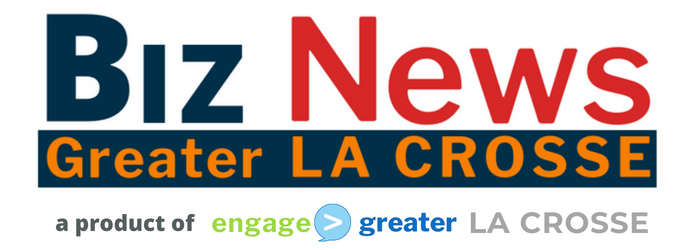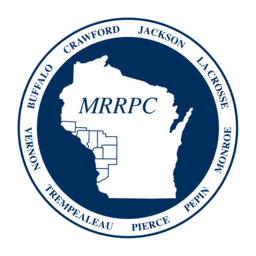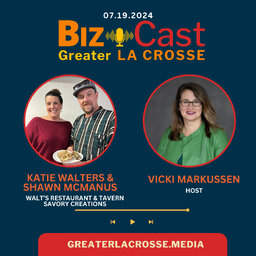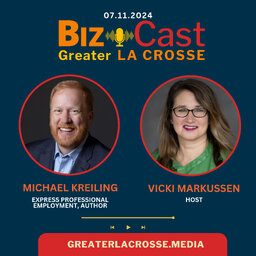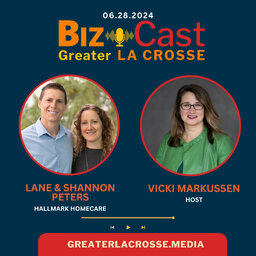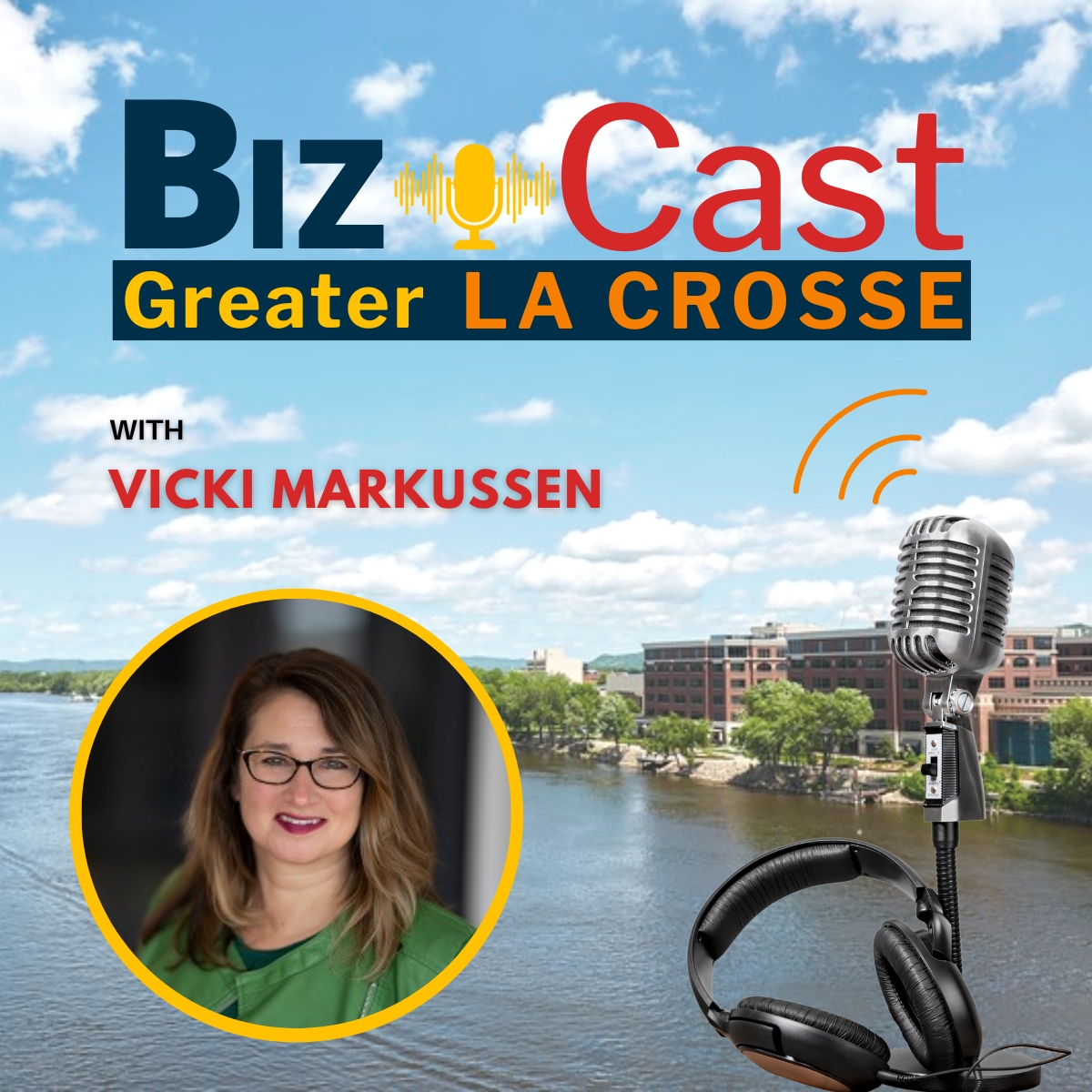
Episode 15
Businesses Getting COVID Help with Mississippi River Regional Planning commission Jon Bingol
About BizCast Greater La Crosse
We bring you news from the business community. From startups to experienced problem solvers, you’ll get in-depth insight on the challenges and opportunities of doing business in Greater La Crosse. Our show is a collaboration between WIZMNews.com and BizNews Greater La Crosse ( GreaterLaCrosse.media ).
Full Transcript [ generated by AI]
[00:00:00] John Bingol: And if they did all those things and we were able to verify it, then they were awarded these dollars.
[00:00:05] John Bingol: We had. Over a thousand inquiries for those 560 grants.
[00:00:12] Vicki Markussen (2): .
[00:00:15] Vicki Markussen (2): Welcome to Biz Cast Greater Lacrosse, brought to you by Biz News. I’m your host, Vicki Markussen we’re bringing you news out of the business community, and I’ve been alternating these topics, so some weeks I s. Focus on a business. Another week I focus on a resource, and this week it’s a resource.
[00:00:35] Vicki Markussen (2): So joining me is John Bingol. He is executive director with the Mississippi River Regional Planning Commission. And I think of you guys as a hidden gem because you’re not you partner with a lot of organizations. You work with businesses. But I don’t know that a lot of people know that you have these resources available.
[00:00:55] Vicki Markussen (2): And so let’s start out with what do you do? What does your structure look like and what are your goals?
[00:01:03] John Bingol: All right. The Mississippi River Regional Planning Commission is one of nine planning commissions in the state of Wisconsin. Were actually established by state statute. And one of our large charges in that statute is to help communities that are required to do specific plans, namely their comprehensive plan that outlines nine categories that they should be working on.
[00:01:30] John Bingol: And that’s a 20-year plan that is supposed to be updated every 10 years. And in addition to that, we do hazard mitigation plans, really trying to help communities plan for. Be inevitable. It’s, as I heard Bill grow last night, say the weather will happen. It’s, we don’t always just know exactly when or how.
[00:01:51] John Bingol: And that’s the goal of the Hazard Mitigation Plan is helping communities be resilient before they have to be, to think about things that could happen and then plan for them as best we can. So, if they do happen, we have a plan, we know how we’re going to respond. And it’s been proven for hundreds of years that when you can do that, you’re really able to minimize some of the damage and heartache to some degree.
[00:02:18] John Bingol: And if the thing never happens on your watch, well at least you were ready. And then the other thing we do, our recreation plans and the recreation plans are required to actually be able to apply for grants with the DNR. So the way to think about our organization is we are a key economic and community development partner.
[00:02:39] John Bingol: And one of the tools that we bring to the table is organizing data into plans that really should become living documents for these communities to help the community, the citizens, the businesses really become all they want to be.
[00:02:55] Vicki Markussen (2): And I think we should clarify too. You’re the I consider you the umbrella organization.
[00:03:01] Vicki Markussen (2): So if there’s a community that doesn’t already have someone able to do a comprehensive plan, like Lacrosse County handles that themselves, the city of lacrosse has one going that you fill in some of the gaps. Is that a good way to. Look at your organization,
[00:03:16] John Bingol: it, it is one way. And, uh, we also partner with those communities you just mentioned as well.
[00:03:21] John Bingol: So sometimes as they’re doing their work, we may also supply some of the data or help them do some of the gis, a graphic informational system work. And GIS is a wonderful tool. Because that old saying that a picture is worth a thousand words really is true for data. And not many people really like to look at those tables and try to decipher what’s going on.
[00:03:46] John Bingol: So when we can take that information and put it into a graphical form and tie it to a map, all of a sudden now becomes very intuitive for most people to really get. What the data’s trying to tell us, and that’s what we’re really trying to do, is tell the story. We don’t wanna make things up. We want to take what’s available and what’s factual and then present that data in a.
[00:04:08] John Bingol: A fair way so people can understand at least what is happening with the information we’ve been able to collect.
[00:04:14] Vicki Markussen (2): You’re talking to a data nerd, a self-professed data nerd. So yes, I know all about gis and its amazing capabilities. I’ve seen it used for determining locations for a business to say, within this radius, people are spending this amount of money on movie rentals or streaming, or.
[00:04:32] Vicki Markussen (2): Crazy, the data that is out there. But one of the pieces I wanted to focus on today because it’s timely, is you were also the distributor of the Wisconsin Bounceback grants, which in short provided. Funding. It was a beautiful piece. Coming out of pandemic dollars, we’ll just call them where you saw where the state saw that there were empty storefronts or businesses and there were businesses wanting to start up.
[00:05:00] Vicki Markussen (2): And so explain how Wisconsin bounce back dollars met that need and how successful they were.
[00:05:07] John Bingol: All right. Well, the program was actually funneled down through the W E D C, and then we contracted with them to actually be the administrator for our nine-county region. And there were certain dollars allocated across the state.
[00:05:23] John Bingol: I believe the total for that program was around a hundred million dollars. And our piece of that for grant purposes was 5.6 million. So that worked out to be 560 $10,000 grants. And these grants were open to people who, as you said, had a business. It could be an existing business or our new business, but what they had to do is prove they were actually a business.
[00:05:51] John Bingol: And then they had to have went into some commercial space that had been previously vacant, and then they had to again prove that between either signed purchase agreements and copies of the registered deeds or signed leases, leases had to be for at least 12 months, and then they had to have a local partner.
[00:06:14] John Bingol: Whether it was an economic development group, a chamber of commerce, a local municipality, someone had to write a letter of support confirming that all of those things you’re gonna find in those documents are true, and this business is filling that vacant space. And if they did all those things and we were able to verify it, then they were awarded these dollars.
[00:06:34] John Bingol: Now we did have more people request information than we had dollars for. We had. Over a thousand inquiries for those 560 grants. So it was competitive and it was time-bound, so we knew it was gonna end at the end of 2022, but we actually ran out of money just after Christmas, so a few days before the end of the year.
[00:06:58] John Bingol: And there were some companies who. We would’ve loved to help, but they didn’t get their information in time or they didn’t get completed documents. But the other nice thing about this program, and I just started in November, so I give a lot of credit to my predecessor, Dave, and our assistant Sarah, who really did the heavy lifting in this program and did a tremendous job.
[00:07:21] John Bingol: It also gave us that opportunity to talk to a businessperson, either new or existing. And in addition to the Bounce Back grant, we got to tell ’em about a bunch of other resources that could be helpful. And it was really fun to see some of these folks that didn’t know mm-hmm. That they were say and, and her team at S B D C.
[00:07:43] John Bingol: The University of Lacrosse who can come out and help them understand the finances of their business or help them with business plans and other resources from the business community that are just there to help, as well as even their local governments. Some of the folks, when they had to go to get that letter of support.
[00:07:59] John Bingol: That was the first time they had to meet people at that municipality, and in every case, everybody reported back to me. It was a wonderful experience, and the people were very supportive and very appreciative that they were starting a business in their community. So those are some of the hidden benefits of the program.
[00:08:19] John Bingol: And then just to give you a snapshot where those dollars went. Across our nine counties in Buffalo County, we had 20 grants. Crawford had 60 Jackson. 32. La Crosse County had 216. Monroe County had 51 Pepin, 24 Pierce 47. Trump below 46 and Vernon County had 64. And if you hear some people that are say, less supportive of the program, as I mentioned, the bar to get these grants wasn’t extremely high.
[00:08:55] John Bingol: We did everything we could. To do our due diligence to make sure it was a real organization. Now, the reality of small business is some don’t make it. So sadly, there were some people who got the grants that the business for whatever reason, just isn’t with us today. But hopefully that entrepreneur learned some lessons that they’ll be able to apply to their next den.
[00:09:18] John Bingol: And then there were probably a few people who maybe checked all the boxes, but. Maybe didn’t necessarily follow through the way they should have, and that’s a sad thing, but there’s just not much you can do about that. All I can say is it’s the vast minority of problems. And then there were those wonderful examples of companies that it was very timely and.
[00:09:40] John Bingol: Some of those people the best they didn’t expect to get it. They applied for it, but they, oh geez, this is a long shot. They didn’t think they’d get it. And my predecessor had a really neat way of getting these dollars out when we could. And we had to verify space in the second round of the bounce back cuz they had to have a minimum of 400 square feet.
[00:10:00] John Bingol: So we would call and say we wanted to come out and do a site visit. Well, they’d already basically been approved, so we’d bring the check. And I will have to say, I’ve had a few different jobs and this was probably some of the most fun I had in my first few weeks on the job where we actually delivered those $10,000 checks to these businesses and they were so appreciative and it was just, it was a wonderful thing to be part of.
[00:10:23] Vicki Markussen (2): I think the interesting thing to counter the critics, if you will, is this was not money going into that individual’s pocket. There had to be a purchase that went along with it. Right? So it was good. It was applicable, if you will, towards rent. It was, they could buy startup costs, those type of things.
[00:10:43] Vicki Markussen (2): Correct. And so it’s really pushing money not into that business, but out into the suppliers of businesses. So, Space, whether it’s office supplies, whether it’s food shelving, all of that. It just keeps the economy moving because those dollars are out in circulation. They’re not sitting in a private individual’s pocket, if you will.
[00:11:04] Vicki Markussen (2): Well,
[00:11:04] John Bingol: And the way to think of it even a little more broadly than that is at the end of the day, every business and some of those were sole proprietorships, so some were individuals. They did get $10,000. They did receive a 10 99. So they have to report that as income. Yes. So really, whether they used it to pay the rent, buy a new piece of equipment, hire a couple people, you hit it on the head, that was 5.6 million that got distributed throughout our region.
[00:11:34] John Bingol: And at the end of the day, that’s a good thing.
[00:11:36] Vicki Markussen (2): Yeah. I have a podcast that’s coming up with someone who used, she didn’t, it didn’t provide 100% of the dollars for her to relocate. She was in, on Alaska and now she’s in lacrosse. But she looked at it as the incentive, so she was thinking about. Having the $10,000 available made it happen.
[00:11:58] Vicki Markussen (2): And while that’s a loss for on Alaska, it’s a gain for lacrosse, it’s a gain for her business and all of the wonderful things, there’s now another business that can go into that location in on Alaska. And so it just keeps the economy moving, which is what we need, right? We need our businesses growing and adding more employees and if they can find the employees.
[00:12:17] Vicki Markussen (2): So that’s a good transition. To your work with workforce. So you also are working on trying to find more workers for businesses. Can you talk about that? It
[00:12:26] John Bingol: is one of the core. Components for the planning commissions is every five years we have to do something called a comprehensive economic development strategy, and that’s for our entire region.
[00:12:41] John Bingol: Now, one thing I wanna mention about these plans and this strategy, everything we do, Is public facing. So when you see a plan or you hear about these strategies, you need to remember public input has been sought and included in every one of these. So when we talk about data, it’s not just the hard quantitative numbers that we get from.
[00:13:09] John Bingol: Different data sources. It’s also the qualitative data that we get from citizens, from communities, from businesses, from people who live and work in our area that have. Needs, wants, desires, ideas, and we give forums in all of these processes so that the public has input on what we’re going to become. Now, from that, in our we call it the saids, so c e d S, we have five core goals for our region, and one of those goals is workforce development, because a lot of the data.
[00:13:47] John Bingol: What we’ve heard from people are there’s a gap between the skills some of our folks have and the skills that our employers need to fill a lot of those open positions. So we’re working with many partners to try to come up with creative and innovative ways to help reduce that gap and connect more people with those job opportunities.
[00:14:11] Vicki Markussen (2): So what does that look like? Applied, so that’s the goal. What are some of those
[00:14:15] John Bingol: action steps? Well, lemme tell you one that was exciting. Just last night, I have to give a plug to TUMMA, which stands for the Upper Mississippi Upper Midwest. Upper Midwest Manufacturing Alliance. Yes, yes.
[00:14:28] John Bingol: Alliance. That’s a TUMMA. T U M M A. Yes. And they had their first — hopefully an annual event — where they’re connecting the schools and the programs that those schools with their tech ed programs have specifically with manufacturing and. The businesses, the manufacturers. So they gave out a bunch of awards to programs that are doing wonderful things in our area and creating a lot of opportunities.
[00:14:53] John Bingol: And as some of the presenters mentioned, those opportunities, even though they started with high school kids doing youth apprenticeships and different work opportunities. That experience led to parents and other friends and family members learning about these opportunities in manufacturing, which led to some new jobs for more than just the students.
[00:15:16] John Bingol: So it was a wonderful event and it was great to see that this organization and that effort is growing and we are I guess we’re an associate member, but we are definitely tied to what they’re doing as well because manufacturing is a core. One of the statistics they had for our region, which we overlap quite a bit, is 14% of all the jobs in the region were with manufacturing.
[00:15:40] John Bingol: Hmm. So they’re definitely one of the largest components to employment in our area. And oftentimes these are good paying jobs. And as they mentioned, several of the speakers, when you think of manufacturing, it’s not just the jobs on the floor or the warehouse, but there’s just a cadre of other opportunities from sales and engineering and accounting and operations and logistics and just a lot of.
[00:16:08] John Bingol: Mobility within, and people had stories that someone started on the factory floor and several years later, they kept advancing and they were in sales or they were in some other planning function. And really just made a career out of it.
[00:16:22] Vicki Markussen (2): And not to mention they’re ever changing demands, right? So they have CNC machines now you need someone to program it and repair it, and yeah, so it just keeps evolving, particularly in manufacturing and metal manufacturing, food processing, composites, all those are very large areas of our economy.
[00:16:41] Vicki Markussen (2): So kudos to you guys for assisting with that. We also wanna talk about, Source for businesses, which is your revolving loan funds. So my understanding of revolving loan funds is this is federal money that came in to be loaned to businesses. It’s gap financing, which is we, this project will not happen if not for these type of loans, and they revolve.
[00:17:06] Vicki Markussen (2): So as they get paid back, they’re available to the next person and to the next person. And you guys had a really key point, which is the dedal of those loans. So I’ve kind of primed you for it. Can you explain how valuable those loans are as a tool for businesses?
[00:17:23] John Bingol: They are, and. Most of our revolving loan funds actually came to be with, again, a private public partnership.
[00:17:30] John Bingol: So most came through the E d A, the Economic Development Administration federal agency, but they were matching dollars. So communities and financial institutions put money together to match those e d A funds to actually seed. Many of those initial revolving loan funds, and then the idea of the fund is sometimes a business doesn’t quite have enough capital to satisfy the financial community.
[00:18:00] John Bingol: But everything else is good about this opportunity. So what this gap financing would do is add that little bit of money to the piece to make the numbers work for the bankers, and give that business an opportunity then to get the financing they need to grow their business. And as you said we still try to make good loans.
[00:18:18] John Bingol: This isn’t the grant. This is a loan. So the expectation is the money will be repaid and then when it is repaid and generally the interest rate is less than what market is, so that way you can help the business get a better rate and try to keep the payments a little lower. And the way ours work is they have a five year balloon.
[00:18:37] John Bingol: So say they’re. A property and we can amortize the loan out 20 years, but we would have a five-year balloon so that in five years they should have built up enough equity that they could go out and get conventional financing. Or if the business was really successful, they may just be able to pay it off from their own proceeds.
[00:18:57] John Bingol: But then as that money comes back, we go through the process again to help others. And it’s a wonderful program A few years ago, Some of our revolving loan funds. We have two for our northern counties. Lacrosse County has one, and then we have another for our Southern county that were this older vintage and with Covid and all the new programs.
[00:19:17] John Bingol: Probably the administration. Realized, geez, we, these have been out for a while. We don’t need to have the same scrutiny. So they actually de federalized those revolving loan funds. And what that meant is now the local community could determine, well, what do we wanna do with that money? And maybe we want to do more things in gap financing.
[00:19:38] John Bingol: And a group we’re working with in Vernon County actually asked all those same questions and they. Taken their defer revolving loan fund, and they’re in the process of reorganizing and they’re still gonna do some gap financing because it does play a role, but they’re also going to do some direct financing smaller loans for startups to really try to enhance those entrepreneurial efforts.
[00:20:03] John Bingol: And sometimes a business just needs a kickstart. The other thing they’re gonna do, they have identified two major areas that they need development in their county, that being childcare and affordable housing. So they’re actually going to revolve out some of those dollars, again, at lower interest rates, specifically for projects designed to work on those two vital needs.
[00:20:27] John Bingol: So it’s really exciting and I look for that to be another piece for our region to really help businesses make those connections improve, and then we revolve ’em back and help some more.
[00:20:40] Vicki Markussen (2): And the dedal, is it two times that a loan that the dollars have to circulate before it de federalizes?
[00:20:47] John Bingol: Well, I think different programs have different, have different numbers.
[00:20:50] John Bingol: Okay. Yeah. And in fact, Now it looks like perhaps after seven years you can apply to have it de federalized. I’m still, some of these things are moving, yes. Moving targets. But on those, some of those loan funds were started back in the eighties. Mm-hmm. So they had been around a while and some of ’em I had learned hadn’t been as effective.
[00:21:11] John Bingol: So, Some of our communities actually had to give some money back to the E D A, cuz they weren’t revolving it enough. Yeah. So that’s the other thing our boards are looking at is how can we really meet our mission and the intent of these things and help us many. Business as organizations as we can.
[00:21:28] Vicki Markussen (2): Yeah, it’s about awareness, right? The businesses need to be aware that this is available. And just to clarify too, cuz some people will say, well, you’re competing on the revolving loans, you’re competing with the private market. But as you said, the private market has already had an opportunity to say, this is how much we’re willing to lend.
[00:21:46] Vicki Markussen (2): So this is that lovely phrasing, but for. So this project would not happen if not for these dollars. It’s kind of the last resort loan, if you will. And then is there any, so there’s a risk to this, right? So the financial, there is, institutions have already looked at it and said, this is as much as we’re willing to risk.
[00:22:05] Vicki Markussen (2): So these dollars. Cover that risk, so to speak. And so the, there’s some due diligence that you have to do, I’m assuming, to say the thumbs up or thumbs down to the loan.
[00:22:17] John Bingol: Right. We still have to do the same due diligence as any other financial institution. And I would say, I don’t consider it competing.
[00:22:25] John Bingol: It’s really collaborating. And even in these cases, say where I mentioned with Vernon County’s idea with the startup, Well, if that kickstarts a business with a $25,000 loan, that may not have been that attractive to some of these financials, but now it’s a going concern. And they’re hiring people. They’re selling things, so they need a bigger account to handle their payroll, their Receivables now.
[00:22:50] John Bingol: That’s an opportunity that they had a hand in really helping those financials. And the financial people that I’ve dealt with, the vast majority of them understand how the world works and that if they’re a good partner, it’ll bring them more opportunity, not less. And that’s really the way to look at it.
[00:23:08] John Bingol: One of the things we try to do, it’s we’re not idealists, but at some point you have to look at the world. And C, the world of opportunity and possibility versus this world of scarcity. And if someone gets X, then someone else can’t have Y, because the reality is oftentimes what they taught us in math that two plus two equals four.
[00:23:31] John Bingol: Well, in economic development, It’s a little different math. Mm-hmm. And sometimes two plus two might equal 10 because there’s this multiplying effect that as you create these dollars, this energy, these new things, other things spawn from that. And you just don’t always know how big something’s gonna be. So if you’re open to it and you’re helping create that future, It really does help everybody in the
[00:24:00] area, and
[00:24:01] Vicki Markussen (2): that is a great way to end it. So thank you for joining us for Biz Cast Greater La Crosse. I’m your host, Vicki Markussen. We’ll catch you next week.

